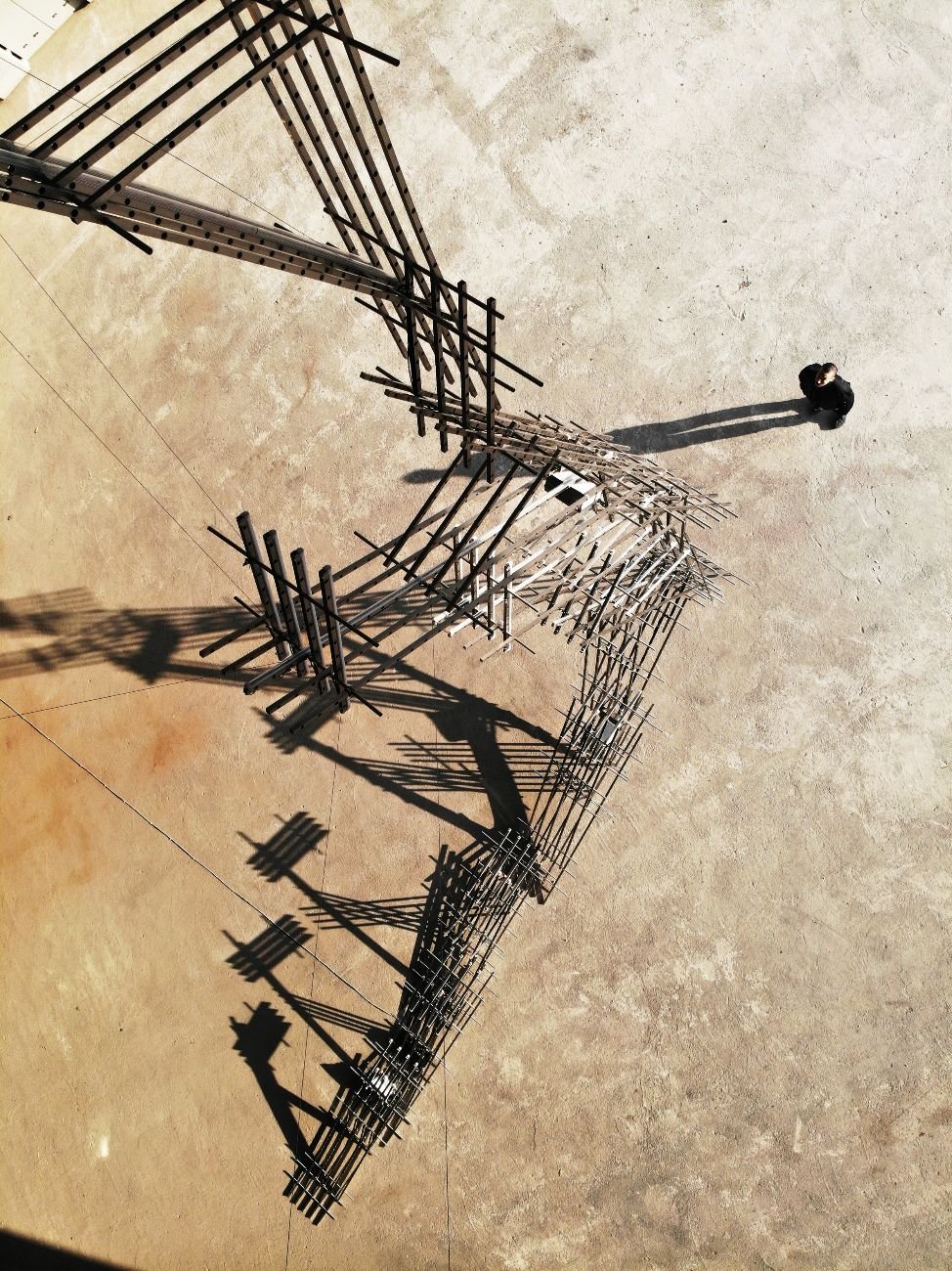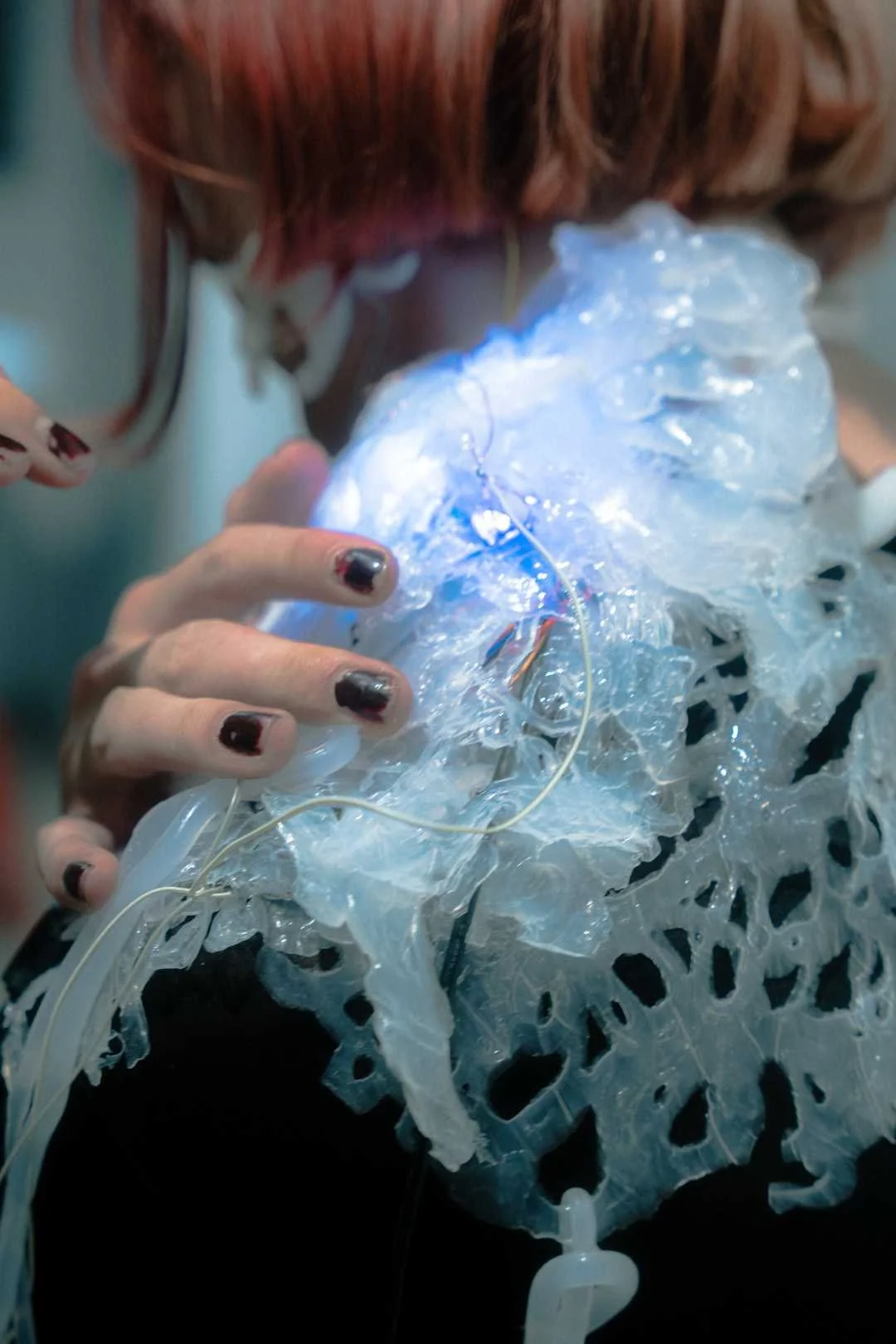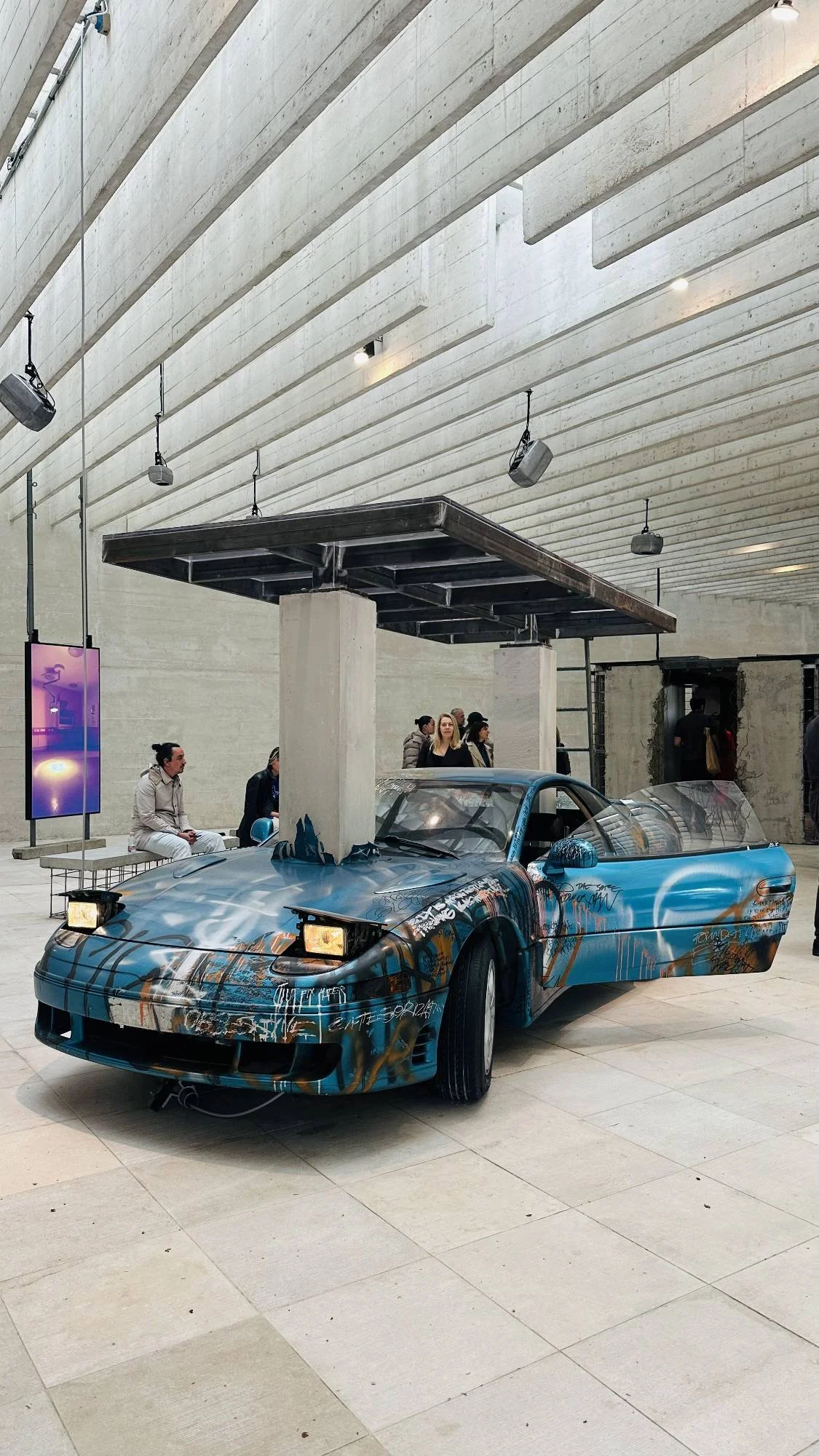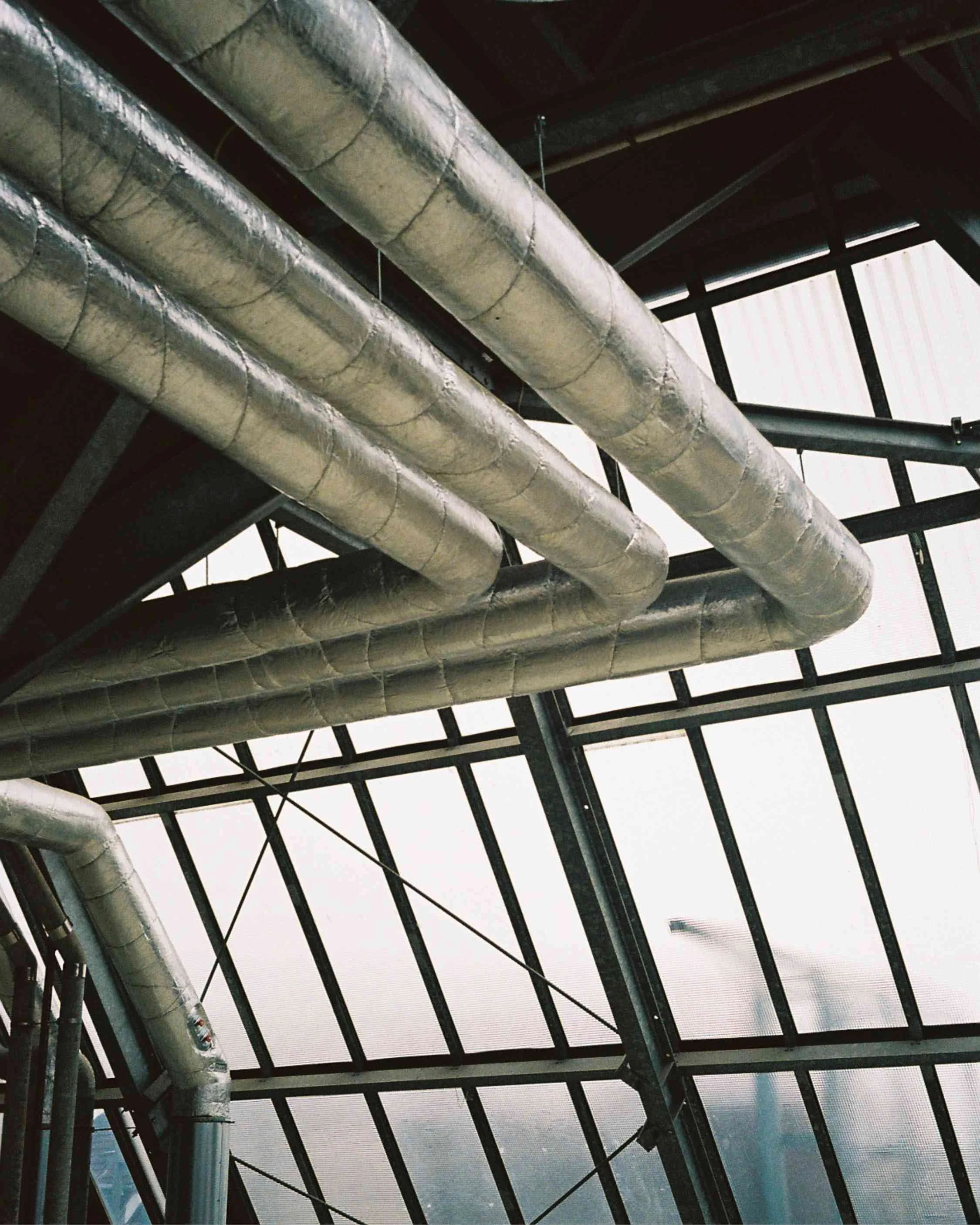IVAAIU City
IVAAIU City symbolizes the convergence of Idea, Visual, Audio, Architecture, and Urbanism. The collective unites urban planners, architects, sound designers, and programmers, illustrating the power of interdisciplinary collaboration.
The relationship between technology and IVAAIU City is reciprocal: technology inspires their projects, and they, in turn, catalyze technological advancement. Notable in this regard is their Robot Architecture Archetype project, which started with a fascination for robot systems but evolved into redefining architecture for human-robot coexistence.
Their aesthetic, characterized by neon lights and deconstructed patterns, is reminiscent of techno music, reflecting the strong influence of music in their creative process.
IVAAIU City envisions a future where architecture evolves into a 'structure with intelligence,' as technology becomes an integral part of our built environment. Their work serves as a bridge between art, science, and technology, offering insights into the coexistence of humans, technology, and architecture in the 21st century.
IVAAIU City stands for Idea, Visual, Audio, Architecture, and Urbanism. How does the collective start, and how do you work together, coming from different disciplines? Do you work with external collaborators?
In the beginning, it started as a solo practice. Still, along the way, while doing diverse types of projects, including architectural practices, audio-visual performances, art exhibitions, and so on, the artists/designers/programmers from different genres gathered, and it turned into a collective. Currently, our collective consists of an urban planner, an architect, a sound designer, and a programmer.
Depending on the nature of the project, we are always open to working with external collaborators. For instance, we are working with a very talented product designer Geunwook Kim for our upcoming product exhibition project with a communication device for climate refugees. Working with new people outside the team is always helpful because it nurtures projects and creatively develops tasks.
Is it the technology that influences IVAAIU City, or vice versa, is IVAAIU City that leads the technology in a project?
Both cases happen. Sometimes technology starts driving the project, but sometimes we do. And sometimes, it occurs consecutively: we are influenced by technology from the beginning but, while dealing with that, we find another perspective and create a new one.
The Robot Architecture Archetype project we have been working on with ZER01NE, Hyundai Motor Group & KIA Motors, happened in that sequence. Initially, we were in the research group for SPOT, the robot from Boston Dynamics at ZER01NE, a creative platform in Seoul. We started working with the robot purely inspired by its system. But at one point, we realized that robots, including SPOT, still have many spatial and physical issues to be implanted into our daily lives. So we initiated a project called the Robot Architecture Archetype to create a new architectural system to help humans and robots coexist.
Can you pick one of your works and describe your workflow as a collective?
One of the projects we recently worked on is a 構造音 project, a three-night live electronic music event at Kgrn Tokyo. For this project, we also invited two guest musicians, Unknown (MJ) Kim and VPR, to build up the conceptual, musical, and structural parts of the music performance. We started with the conceptual part and discussed the direction we would like to pursue with this event. And then addressed the phenomenon we would like to create during the event. We made sketches of physical and structural models and shared them to build up audio and visual components which could be integrated. Then all the different parts are continuously modified with each other to fit into a final form.
What is the underlying philosophy and artistic research behind IVAAIU City and your work?
In one of your texts, you write, "The next archetype of architecture in the 21st century should be a 'structure with intelligence."
Could you please elaborate more on this?
During the Industrial Revolution, architectural structures achieved strength. Using concrete, steel, and reinforced structures allowed us to create new open plans that could accommodate new social, industrial, and urban transitions. It changed our living scape dramatically.
In the age we are living in, architectural structures have started to have intelligence. We began to put computers, networks, sensors, and motors inside the structural systems. The changes are happening sporadically in various parts, but eventually, we will see a new architectural archetype with artificial intelligence.
The aesthetic of your works is quite recognizable, futuristic in the use of neon lights and cold lights, very deconstructed, and yet there seems to be a rigor to the chaos. When I look at your works, I immediately associate them to techno music with their repetitive patterns, deconstructed sounds and reconstructed in new compositions.
This association between music and architecture only happened to me a few times; one of them - in the opposite direction, from music to architecture - happens with the music of Richie Hawtin / Plastikman.
Does the music play a role in the conceptualization of your works?
I always connect architecture/space and music/sound during design practices. I trained as an architect and have worked as an electronic music producer/live performer for almost a decade. So when I draw plans of architectural structures, I naturally imagine the sounds that come out of them, and when I work on making sonic patterns, I imagine the spaces echo with them. And I think everyone in the art and design fields, or even the people outside of these professions, does this crossing imagination in their way. The coexistence between music and architecture is just beautiful as it is, and I try to use it in our projects as much as possible.
We tend to see science and technology at the service of art or as an inspiration; but can art be at the service of science and technology, or architecture in your case? If so, how?
Yes, I agree that art can be at the service of science and technology, also architecture. I identify art with an artist, science with a scientist, technology with a technologist, and architecture with an architect. And because the service and inspiration between humans don’t work in one direction, the outcomes will result from interactions and exchanges.
You also experimented with augmented reality recently. What was your experience with it, and what do you think about the hybridization of physical/digital in architecture?
We have been exercising this technology lately in various projects. It’s challenging and exciting at the same time. The most dominating factor when working on structural designs is physical stress. It determines or limits how the shapes and compositions can be made. However, it loses its domination when we use the digital version of these structures in virtual reality. So even though the visual output could look similar, the basic foundation between physical and digital forms cannot be the same. We have been exploring the possibility of a new way of synthesis between two structural systems.
From my experience with Asia, and South Korea in particular, I always felt South Koreans are more interested in technology, innovation and new media arts compared to Europeans. You did some works in London, have you noticed any difference in the reception of Europeans VS South Koreans to your works?
Yes. We opened an architecture studio in London, did an exhibition, and plan to do the lecture at the university in Reading next month. During my experiences in London, I could sense the difference too. Due to geographical, political, social, and historical reasons, in South Korea, applied science and technologies are much more developed than basic science. South Korean society itself highly depends on the speed of applying new technologies, and it affects our daily lives and also the perspective of art and architecture. In my personal experience, audiences in Seoul perceive our work more as a specific technology with a high level of understanding of technology. Still, audiences in London perceive it as a part of a movement with a deep knowledge of history.
You work a lot with Boston Dynamics SPOT (the robodog) exploring the coexistence with humans and the city environment.
What have you discovered about the way robots explore their surroundings, and the collaboration with humans?
I was very impressed by how developed is the SPOT movement. It could do the tasks in various surrounding conditions alongside humans at a highly sophisticated level. But the problem is our living environment is more than various conditions. Considering the fast-changing highly-densified urban environment, to make robots explore and do tasks safely with humans, there are still a lot of parts that should be developed. And it cannot be done only by the development of robots. The architecture and urban infrastructure should be developed as fast and progressively as the robots do. And that is the reason why we started the project Robot Architecture Archetype.
In the future world you imagine, should robots assist the humans or live an independent life? We tend to see robots in relation to us, humans. But maybe they are smart enough to live their own lives...
I ask myself this question every time we work on the project and still have no answer. And at some point, we should start thinking about how we can become independent from artificial intelligence and robots.
I would like to conclude by asking what is the future you are dreaming of and where does artificial intelligence fit in the relationship with humans?
Humans created trouble in our environments on so many levels. We might not even recognize several critical issues yet. To solve these problems and to survive as a species, we need good assistance. And artificial intelligence and robots can be effective systems that we can choose, only if we can use them at an optimum level. I think we are in the middle of a critical phase of history. We need to make sensible definitions and wise decisions to be prepared for this revolution coming up.
courtesy of UMANESIMO ATRIFICIALE
interview by FILIPPO ROSATI
What to read next








